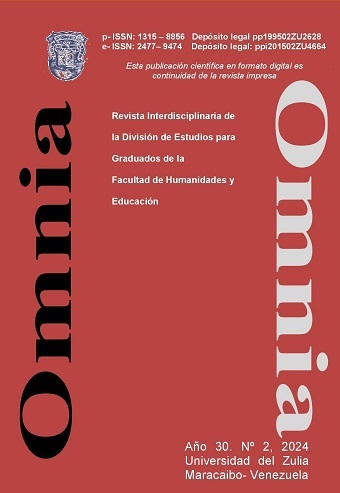Multiple intelligences vs autism
Abstract
The objective was to determine the effect of a stimulation program for multiple intelligences in children with autism spectrum disorders. The postulates of Gardner (1997 - present), Diagnostic and Statistical Manual of mental disorders (IV edition), Rivière (2001), Mora and Vindas (2002) and Duarte and Naveda (2009), among others, were followed. The research is of an explanatory type; with an experimental, field and transactional - descriptive design. The population was children between the ages of 8 and 10 who attend FUPANAZ, in Maracaibo, for what was a population census. The data collection technique was carried out through observation by survey, through a dichotomous scale type instrument designed by Duarte and Naveda (2009), called "Multiple Intelligence Test for people with Autism", which consists of 35 items and 2 answer alternatives. It was submitted to the validation method by judgment of 5 experts in the area and the reliability was determined through the application of a pilot test and later the reliability was applied through the Cronbach coefficient, whose result was r= 0. .92; being highly reliable. The results showed that before the application of the program the level of all the intelligences of the participants were located within the expected average range, however; after the application these results increased significantly, so it was concluded that the program is effective.
Downloads
References
Arias, Fidias (2006). El Proyecto de Investigación. Introducción a la Metodología Científica. Caracas. Editorial Epistema.
Armstrong, Thomas (2001). Inteligencias Múltiples: cómo descubrirlas y estimularlas en sus hijos. San José, Costa Rica: Grupo Editorial Norma. Asociación General de Psiquiatría de Inglaterra. Portal Ofi-cial.
Baron-Cohen Simon, Scahill V.L., Izaguirre D., Horsey H., Robertson M.M. (2000). The early identification of autism: The checklist for Autism in Todlers (CHAT). Journal of the Royal Society of Médi-cine. 93 521-525.
Blanco, Rosa (1992). "Alumnos con Necesidades Educativas Especiales y Adecuaciones Curriculares". Ministerio de Educación y Cultura. España,
Blanco, B. y Blanco, L. (2009). Contextos y estrategias en la resolución de problemas de primaria. Números. Revista de Didáctica de las Matemáticas, 71, 75 - 85. En http://www.sinewton.org/numeros/numeros/71/Articulos_03.pdf
Buendia (2000). Consideraciones Éticas. Material reimpreso URBE. Ma-racaibo
Campbell, Linda., Campbell, Bruce y Dickenson, Dee (2002). Inteligen-cias múltiples. Usos prácticos para la enseñanza y el aprendizaje. Buenos Aires, Argentina: Editorial Troquel S. A.
Carrasco, José y Calero, José (2000). Aprendo a Investigar en Educa-ción. Ediciones Rialp Madrid. Centro de Inclusión de Niños con Autismo. Portal Oficial. Disponible en: http://autismodiario.org/tag/inclusion/Centro de Rehabilitación Inte-gral de la Niñez y la Adolescencia. Portal Oficial
Chávez, N. (2007). Introducción a la investigación Educativa. Editorial Sipal. Caracas. Federación Venezolana de Psicólogos (1976), "Có-digo de Ética Profesional°3
Duarte, María y Villalobos, Ana (2009). Inteligencias Múltiples en per-sonas con Autismo. Universidad Rafael Urdaneta.
Encuesta Nacional de Discapacidad. ENDI (2005). Ministerio de Educa-ción de la República Argentina.
Felici, Maira (2010). Intervenciones Psico educativas en el Aspecto Au-tista. Universidad Internacional de Andalucía. España.
Gardner Howard (1995), “Inteligencias múltiples. La teoría en la prác-tica”. (1ra ed.) Buenos
Aires: Editorial Paidos (1995), “Estructuras de la Mente. La teoría de las inteligencias múltiples”. (1eraed.) Biblioteca de Psicología y Psicoanálisis. México.
Gatgens, G (2003). Inteligencias Múltiples: Enseñar a los niños en la forma en que ellos aprenden. Tesis de maestría no publicada, Uni-versidad Nacional, Heredia, Costa Rica.
Manual Diagnóstico y Estadístico de los trastornos mentales. (DSM). (2000). IVEdición.1era Revisión .J. Wiley and SonsInc. New York.
Marchesi, Álvaro., Palacios, Jesús y Coll, César (2001), “Desarrollo psi-cológico y educación. 2.”Psicología de la educación escolar. Ma-drid: Alianza Editorial. Psicología y Educación.
Martín, Evaristo (2002). Gestión de Instituciones Educativas Inteli-gentes. Un manual para gestionar cualquier tipo de organización. McGrawHill. Madrid, España.





